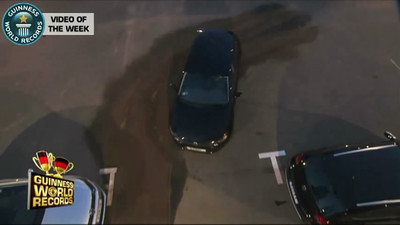How did foreigners feel when they experienced the 'user car inspection' in Japan?

By
It is a car inspection system that some people say, 'The car inspection system in Japan is very different from other countries, and it takes time and money,' and even 'the theory that car inspection is unnecessary' is sometimes talked about. But how do foreigners who are not accustomed to the Japanese vehicle inspection system feel? Rory Johnston, who lives in Japan , tried a user vehicle inspection and experienced for himself what the vehicle inspection looks like.
Follow Rory: Shaken --Car inspection in Japan
http://followrory.blogspot.jp/2013/06/shaken-car-inspection-in-japan.html
'In Japan, it is basically necessary to carry out an automobile inspection every two years. Although the cost of the inspection itself is not great, various other costs are accumulated and it becomes expensive,' says Rory. The biggest problem is 'a mechanism that makes it difficult to send out for inspection by yourself'. The inspection site is open only during the daytime on weekdays, which is impossible for people who cannot take a day off from work. Therefore, many people pay a fee to a car dealer or a car inspection agency to have the car inspection done on their behalf. Although the number of companies offering services with relatively low fees is increasing, it is still perceived as a fee of 100,000 yen.
In order to raise the cost cheaply, Rory decided to challenge the user car inspection. I started by replacing parts that might get caught in the inspection. We have started maintenance by bringing your car to the 'rental garage' where you can pay to lend repair equipment.
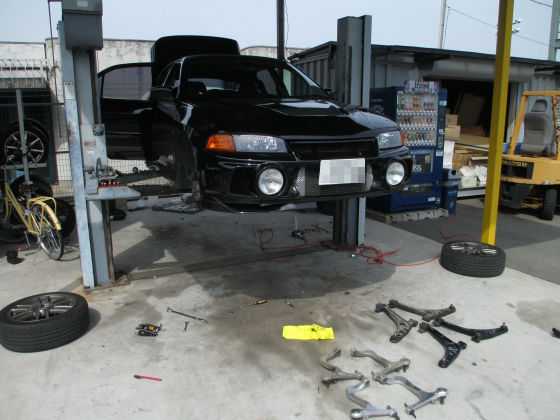
This is a suspension part that connects the tire and the car body. The left is a new part and the right is a part before replacement.
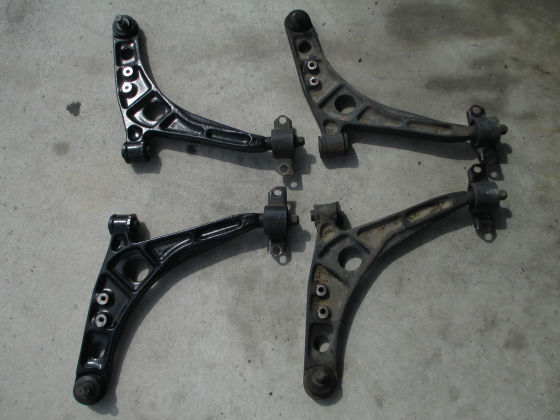
At first glance, it looks like it doesn't need to be replaced.

Actually, before this inspection, Mr. Rory had replaced the fuel injection device and tuned up the engine. It seems that it was necessary to take extra time to return the red replacement part to the yellow genuine part because it was worried that the inspection would be caught in the exhaust gas item.

And on the day of the inspection. I went to the inspection site with the 80,000 yen I had saved for this day. First, head to the building labeled '1'.

Except for Rory, all of them came from the maintenance shop dressed in work clothes.
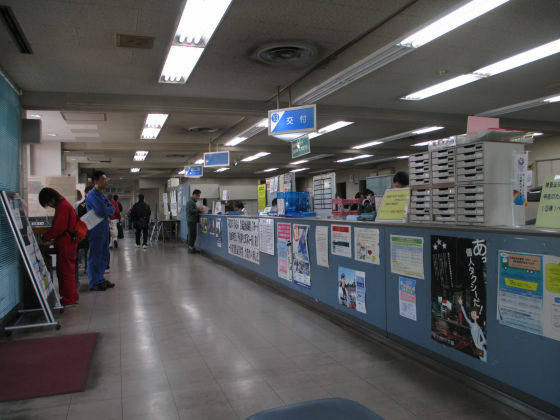
The amount of money I paid when I went around the counters and completed various procedures was about 60,000 yen. Rory spills, knowing that the cost of the inspection itself was around 2000 yen, and 'most of it was taken with taxes.' After that, check the video about the inspection process in the waiting room and learn the procedure. There is a poster like this outside the video room ...

And then the inspection starts. I was urged to line up for cars entering the inspection area.
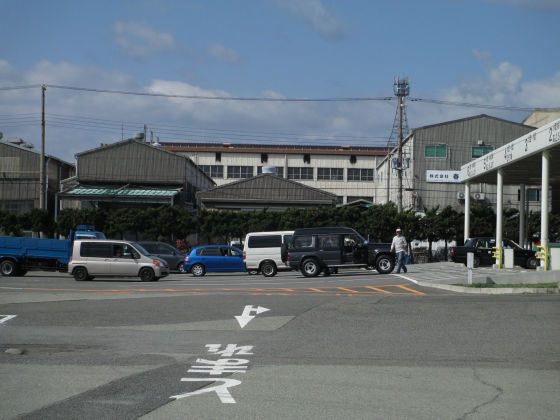
The inspection site was divided into about eight lanes for each type of vehicle and inspection item, and two lanes were assigned for user vehicle inspections. Small cars to large cars are lined up in each lane, and some of them are like forklifts.
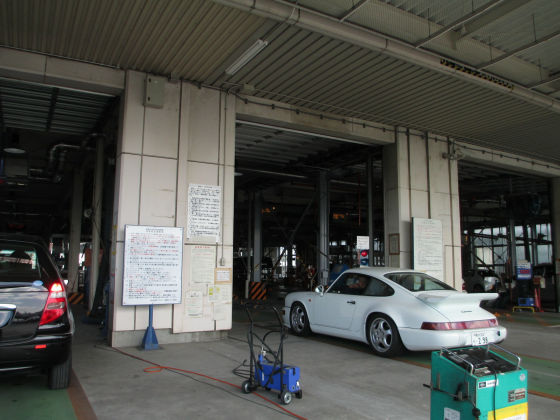
Upon entering the inspection lane, an inspector will perform an initial check. Lights, turn signals, wipers, washer fluid, window openings, back lamps, horns, and seatbelt lamps are inspected. The steering wheel backlash and tire check should have been included in the item, but it didn't seem to have been inspected. At this point, I remembered that I had 60 checklists that I had prepared in advance, but apparently I didn't need them.
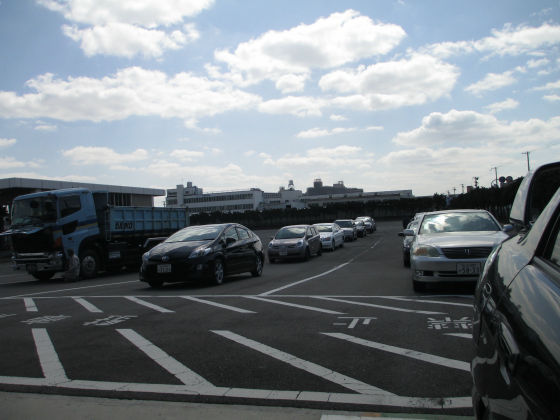
Next, we conducted a tire side slip test and a speedometer test. The tires placed on the rollers rotate, and when the meter in the car points to 40 km / h, the button of the switch handed to you is pressed. Next is the brake test. I was asked to operate the parking brake, step on the accelerator and step on the brake when the tires reached the specified speed. Rory, who failed the first time, probably because he wasn't used to it, but he was able to pass the second challenge. After that, I proceeded to headlight inspection, inspection of the underbody of the car body, and exhaust gas that I was worried about. Insert a rod-shaped sensor called a 'probe' for inspection into the muffler at the rear of the car body. And the result was ... failed.
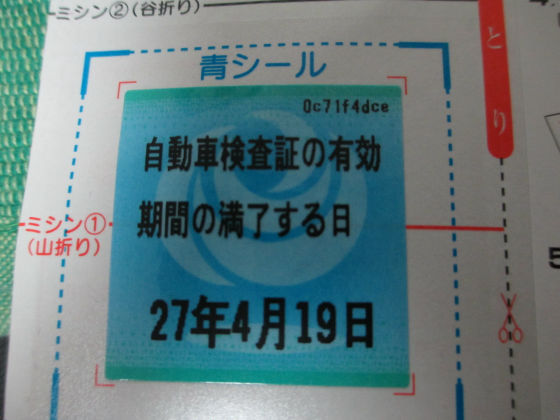
Rory was disappointed when the 'Fail' lamp turned on, but an inspector came immediately, and as a result of various investigations, he managed to reach the allowable value, so he decided to 'pass'. After spending time, stress and money, I finally got a pass. Looking at this pass certificate, Mr. Rory said, 'Is it necessary to endure this pressure again in two years?'
Mr. Rory seems to be a little tired of the car inspection, but he seems to have understood that cars are sold in Japan with the phrase 'with 2 years of car inspection'. In addition, he seemed to be a little tired of the additional costs, saying, 'It costs about 100,000 yen every two years. Even a small car costs this much, so I often run in the United States. When it comes to large SUVs, you'll want to cover your eyes. '

By kenjonbro
It is often said that 'vehicle inspection is a special system only in Japan', but in reality, there are countries and regions that have similar systems even if they have different shapes. The Ministry of Land, Infrastructure, Transport and Tourism has compiled a comparison of vehicle inspection systems in each country.
Inspection system in other countries
http://www.mlit.go.jp/jidosha/kensatoroku/shogaikoku/index.htm
However, if you compare them closely, it is also true that the actual conditions such as inspection items and costs are significantly different from those in Japan. There seems to be no doubt that the system is formed with each speculation and aim.
Related Posts:
in Note, Posted by darkhorse_log





